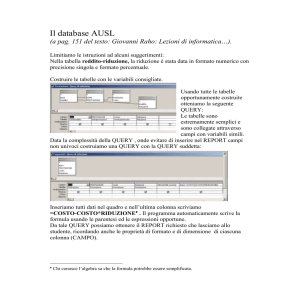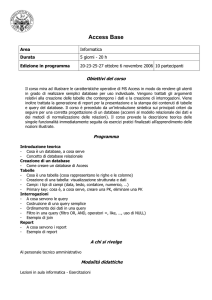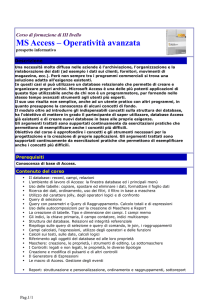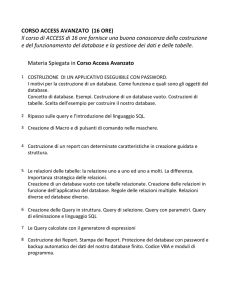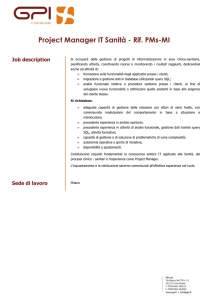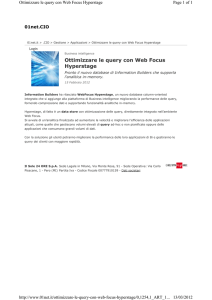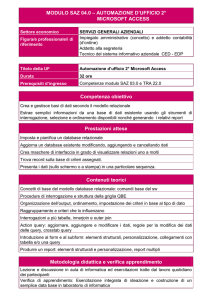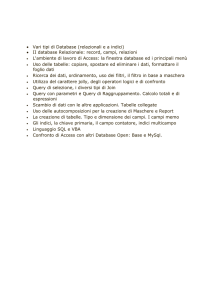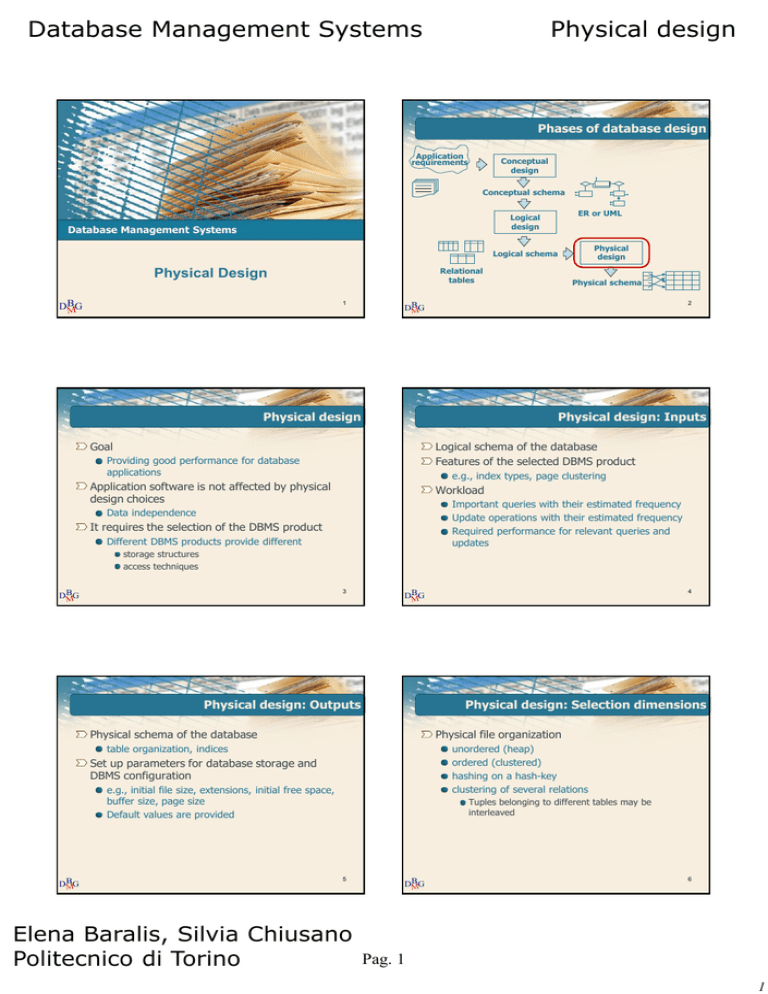
Database Management Systems
Physical design
Phases of database design
Application
requirements
Conceptual
design
Conceptual schema
ER or UML
Logical
design
Database Management Systems
Physical
design
Logical schema
Relational
tables
Physical Design
DB
MG
1
Physical schema
2
DB
MG
Physical design
Physical design: Inputs
Goal
Logical schema of the database
Features of the selected DBMS product
Providing good performance for database
applications
e.g., index types, page clustering
Application software is not affected by physical
design choices
Workload
Important queries with their estimated frequency
Update operations with their estimated frequency
Required performance for relevant queries and
updates
Data independence
It requires the selection of the DBMS product
Different DBMS products provide different
storage structures
access techniques
3
DB
MG
Physical design: Outputs
Physical design: Selection dimensions
Physical schema of the database
Physical file organization
table organization, indices
unordered (heap)
ordered (clustered)
hashing on a hash-key
clustering of several relations
Set up parameters for database storage and
DBMS configuration
e.g., initial file size, extensions, initial free space,
buffer size, page size
Default values are provided
DB
MG
4
DB
MG
Tuples belonging to different tables may be
interleaved
5
Elena Baralis, Silvia Chiusano
Politecnico di Torino
DB
MG
6
Pag. 1
1
Database Management Systems
Physical design: Selection dimensions
Physical design
Characterization of the workload
Indices
For each query
different structures
accessed tables
visualized attributes
attributes involved in selections and joins
selectivity of selections
e.g., B+-Tree, hash
clustered (or primary)
Only one index of this type can be defined
unclustered (or secondary)
Many different indices can be defined
For each update
attributes and tables involved in selections
selectivity of selections
update type (Insert / Delete / Update) and
updated attributes (if any)
7
DB
MG
8
DB
MG
Selection of data structures
Selection of data structures
Selection of
Changes in the logical schema
physical storage of tables
indices
alternatives which preserve BCNF (Boyce Code
Normal Form)
alternatives not preserving BCNF
For each table
e.g., in data warehouses
file structure
partitioning on different disks
heap or clustered
attributes to be indexed
hash or B+-Tree
clustered or unclustered
9
DB
MG
10
DB
MG
Physical design strategies
General criteria
No general design methodology is available
The primary key is usually exploited for selections
and joins
trial and error design process
general criteria
“common sense” heuristics
index on the primary key
clustered or unclustered, depending on other design
constraints
Physical design may be improved after
deployment
database tuning
DB
MG
11
Elena Baralis, Silvia Chiusano
Politecnico di Torino
DB
MG
12
Pag. 2
2
Database Management Systems
Physical design
General criteria
Heuristics
Never index small tables
Add more indices for the most common query
predicates
loading the entire table requires few disk reads
Select a frequent query
Consider its current evaluation plan
Define a new index and consider the new
evaluation plan
Never index attributes with low cardinality
domains
low selectivity
e.g., gender attribute
if the cost improves, add the index
not true in data warehouses
Verify the effect of the new index on
different workloads and exploitation of bitmap
indices
modification workload
available disk space
13
DB
MG
14
DB
MG
Heuristics
Heuristics
For attributes involved in simple predicates of a
where clause
For where clauses involving many simple
predicates
Equality predicate
Multi attribute (composite) index
Select the appropriate key order
Hash is preferred
B+-Tree
the order of attributes affects the usability of the
index
Range predicate
B+-Tree
Evaluate if using a clustered index improves in
case of slow queries
Evaluate maintenance cost
15
DB
MG
16
DB
MG
Heuristics
Heuristics
To improve joins
For group by
Nested loop
Index on the grouping attributes
Index on the inner table join attribute
Hash index or B+-tree
Consider group by push down
Merge scan
B+-Tree on the join attribute (if possible, clustered)
anticipation of group by with respect to joins
not available in all systems
observe the execution plan
DB
MG
17
Elena Baralis, Silvia Chiusano
Politecnico di Torino
DB
MG
18
Pag. 3
3
Database Management Systems
Example: Group by push down
Physical design
Example: Initial query tree
Tables
PRODUCT (Prod#, PName, PType, PCategory)
SHOP (Shop#, City, Province, Region, State)
SALES (Prod#, Shop#, Date, Qty)
GROUP BY PType, Province
SQL query
GROUP BY Prod#, Province
SELECT PType, Province, SUM (Qty)
FROM Sales S, Shop SH, Product P
WHERE S.Shop# = SH.Shop#
AND S.Prod# = P.Prod#
AND Region =’Piemonte’
GROUP BY PType, Province;
sRegion = ‘Piemonte’
20
DB
MG
Example: Rewritten query tree (1)
Example: Rewritten query tree (2)
GROUP BY PType, Province
GROUP BY Prod#, Province
SHOP
GROUP BY PType, Province
PRODUCT
sRegion = ‘Piemonte’
GROUP BY Prod#, Province
sRegion = ‘Piemonte’
GROUP BY Prod#, Shop#
SALES
SHOP
21
DB
MG
SALES
SHOP
19
DB
MG
PRODUCT
PRODUCT
GROUP BY Prod#, Shop#
SALES
22
DB
MG
If it does not work?
Query execution is not as fast as you expect
or you are not satisfied yet
Remember to update database statistics!
Database tuning
Add and remove indices
May be performed also after deployment
Database Management Systems
Techniques to affect the optimizer decision
Should almost never be used
called hints in oracle
Physical Design Examples
Data independence is lost
DB
MG
23
Elena Baralis, Silvia Chiusano
Politecnico di Torino
DB
MG
24
Pag. 4
4
Database Management Systems
Physical design
Example tables
Example 1
Tables
SQL query
EMP (Emp#, EName, Dept#, Salary, Age, Hobby)
DEPT (Dept#, DName, Mgr)
SELECT *
FROM EMP
WHERE Salary/12 = 1500;
In EMP
Dept# FOREIGN KEY REFERENCES DEPT.Dept#
In DEPT
Mgr FOREIGN KEY REFERENCES EMP.Emp#
Index on the salary attribute (B+-Tree)
The index may be disregarded because of the
arithmetic expression
25
DB
MG
26
DB
MG
Example 2
Example 3
SQL query
Suppose that table EMP has block factor
(number of tuples per block) equal to 30
SELECT *
FROM EMP
WHERE Salary = 18000;
a) Card(DEPT)= 50
b) Card(DEPT) = 2000
For accessing Dept# in the EMP table, would
you define a secondary index on Emp.Dept#?
The index is used but it does not provide any
benefit
Consider Salary data distribution
The value is very frequent and index access is not
appropriate
27
DB
MG
28
DB
MG
Example 3
Example 4
Case A: Card (DEPT) = 50
SQL query
Indexing is not appropriate
Each page on average contains almost all
departments
SELECT EName, Mgr
FROM EMP E, DEPT D
WHERE E.Dept# = D.Dept#
AND DName = ‘Toys’;
sequential scan is better
Case B: Card(DEPT) = 2000
Indexing is appropriate
Each page contains tuples belonging to few
departments
DB
MG
Index definition
Hash Index on DName for the selection condition
Hash Index on Emp. Dept# for a nested loop with
Emp as inner table
29
Elena Baralis, Silvia Chiusano
Politecnico di Torino
DB
MG
30
Pag. 5
5
Database Management Systems
Physical design
Example 5
Example 6
SQL query
SQL query
SELECT EName, Mgr
FROM EMP E, DEPT D
WHERE E.Dept# = D.Dept#
AND DName = ‘Toys’
SELECT EName, Mgr
FROM EMP E, DEPT D
WHERE E.Dept# = D.Dept#
AND Age=25;
AND Hobby=’Tennis’;
AND Salary BETWEEN 10000 AND 12000
Index definition
An index on Age may be considered
it depends on the selectivity of the condition
31
DB
MG
32
DB
MG
Example 6: selection
Example 6: join
Alternatives for the selection on EMP
Alternatives for join
hash index on Hobby
B+-Tree on Salary
Hash join
Nested loop
Usually equality predicates are more selective
EMP outer
because of selection predicates
DEPT inner
One index is always considered by the optimizer
Two indices may be exploited by smart
optimizers
plus index on DEPT.Dept#
not appropriate if DEPT table is very small
compute the intersection of RIDs before reading
tuples
33
DB
MG
34
DB
MG
Example 7
Example 7
SQL query
If the selection condition on Age is not very
selective
SELECT Dept#, Count(*)
FROM EMP
no B+-Tree on Age
For group by
WHERE Age>20
Clustered index on Dept#
GROUP BY Dept#
Avoids sorting and reads blocks ready for group by
Good!
Secondary index on Dept#
May cause too many reads
Consider if appropriate
DB
MG
35
Elena Baralis, Silvia Chiusano
Politecnico di Torino
DB
MG
36
Pag. 6
6
Database Management Systems
Physical design
Example 8
Example 8
SQL query
Unclustered (secondary) index on Dept#
It avoids reading table EMP
SELECT Dept#, COUNT(*)
FROM EMP
GROUP BY Dept#
It is a covering index
it answers the query without requiring access to
table data
37
DB
MG
38
DB
MG
Example 9
Example 10
SQL query
SQL query
SELECT Mgr
FROM DEPT, EMP
WHERE DEPT.Dept#=EMP.Dept#
SELECT AVG(Salary)
FROM EMP
WHERE Age = 25
AND Salary BETWEEN 3000 AND 5000
Unclustered index on EMP.Dept#
It avoids reading table EMP
39
DB
MG
DB
MG
40
Example 10
Composite index on <Age,Salary>
Fastest solution
This order is the best if the condition on Age is
more selective
Issues in composite indices
Order of the fields in a composite index is
important
Update overhead grows
DB
MG
41
Elena Baralis, Silvia Chiusano
Politecnico di Torino
Pag. 7
7




